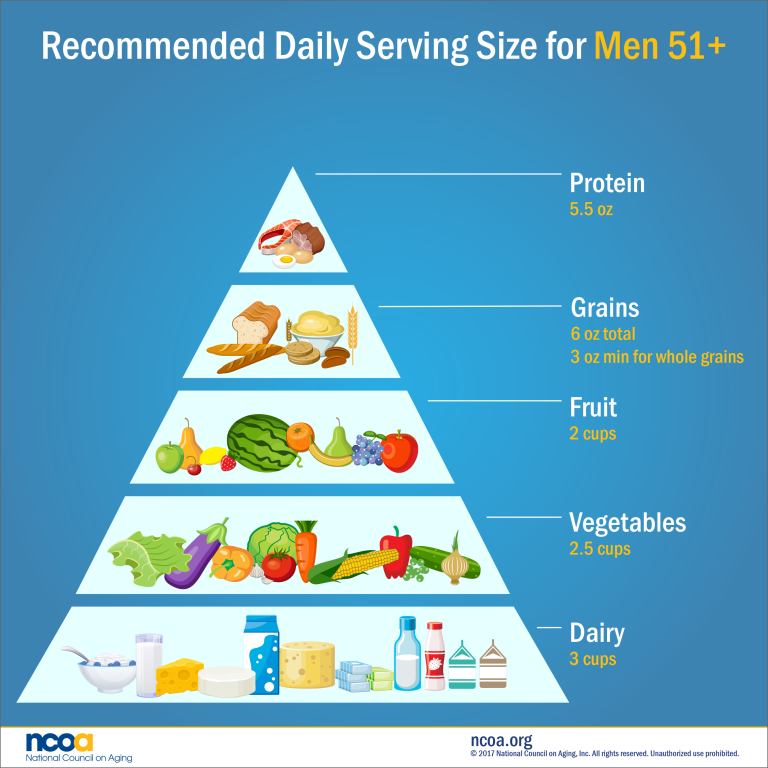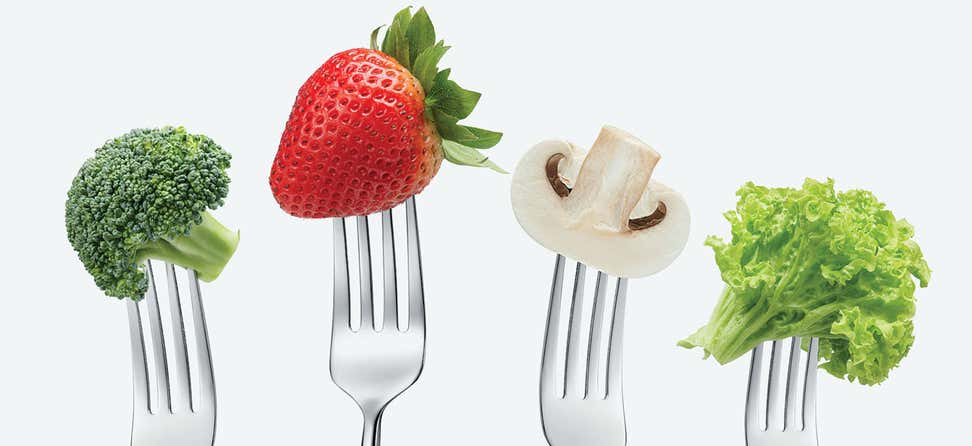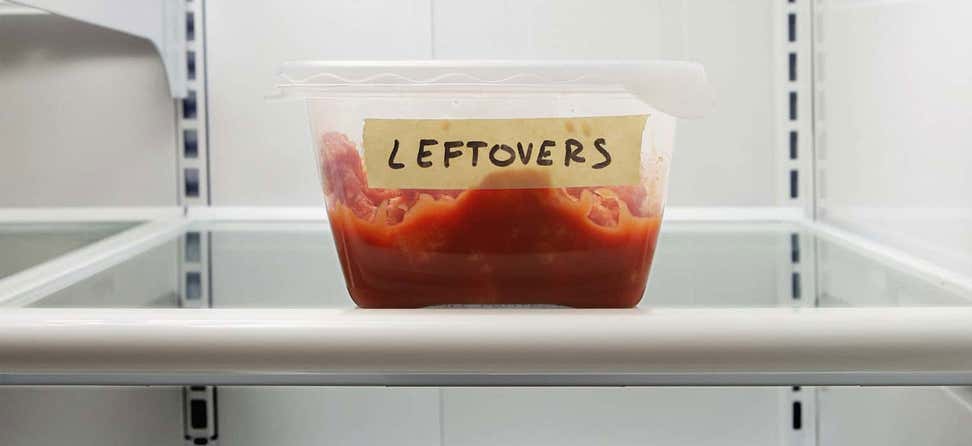Key Takeaways
After 50, it’s more important than ever that you are eating well to get adequate nutrients.
Healthy eating means a focus on the major food groups—fruits, vegetables, protein, dairy, and whole grains—and the recommended daily serving size for each.
Use the tips below to help make healthy eating choices this year, even if you’re on a tight budget.
After 50, it’s more important than ever that you are eating well to get adequate nutrients. As we age, our weakening immune systems and other factors make us more prone to chronic conditions, falls, hospital stays, and illness. Proper nutrition can help to prevent—or diminish the dangers—of these age-related risks. Use the tips below to help make healthy eating choices this year, even if you’re on a tight budget.
1. Know what a healthy plate looks like and follow recommended servings
Filling your plate with the right food is key, especially for adults aged 50+. Healthy eating means a focus on the major food groups—fruits, vegetables, protein, dairy, and whole grains—and the recommended daily serving size for each. ChooseMyPlate, created by the U.S. Department of Agriculture (USDA), is a free resource that helps you see how the food groups should stack up based on your age, gender, and level of physical activity.
For men and women aged 51+ who get less than 30 minutes of moderate daily physical activity, this is what your daily servings should look like.


2. Choose food based on important nutrients
Every bite counts as you age, so fill your body with vitamin and mineral-rich foods—and not empty calories. Some of the most important nutrients you need for healthy aging include:
- Vitamin B12—2.4 micrograms/day. Foods high in B12 include fish, shellfish, lean red meat, low-fat dairy, cheese, and eggs.
- Folate/Folic acid—400 μg/day. Foods high in folate include dark leafy greens, asparagus, broccoli, citrus fruits, beans, seeds, and nuts.
- Calcium—1,200 mg/day. Foods high in calcium include low-fat milk, kale, sardines, broccoli, yogurt, and cheese.
- Vitamin D—800-2,000 IU/day depending on sun exposure and health conditions. Sources of high Vitamin D include fish, shellfish, low-fat milk, orange juice, and the sun.
- Potassium—4,700 mg/day. Foods high in potassium include avocado, spinach, sweet potato, yogurt, coconut water, and white beans.
- Magnesium—400 mg/day. Foods high in magnesium include dark leafy greens, seeds and nuts, fish, beans and lentils, and brown rice.
- Fiber—30 grams for men and 21 grams for women. Great sources of fiber include avocados, raspberries, blackberries, artichokes, peas, beans, lentils, nuts, and seeds.
- Omega-3 Fats—500 mg/day. Foods high in Omega-3 fats are flaxseed oil, fish and fish oils, nuts, shellfish, soybeans, and spinach.
3. Stay hydrated
Water is an extra important nutrient because many medications can increase your chances of dehydration. Plus, one of the key minerals we need, fiber, absorbs water. Thus, you need to drink fluids consistently throughout the day, making sure to get a minimum of 8 glasses, or 64 fluid ounces.
4. Read nutrition labels
Be a smart shopper. It’s always best to buy fresh protein, dairy, and produce when you can, but when you opt for packaged foods, look for items that are lower in fat, added sugar, and sodium. Buy spices instead of salt to season your food, and choose a natural sweetener, like Stevia, instead of sugar.
Also, pay close attention to whole grain labels. If food has the “100% whole grain” stamp, it means that each serving contains at least a full serving or more of whole grains, while the basic “whole grain” stamp means that each serving has at least half a serving of whole grains per serving. Learn more about whole grain labeling.
5. Stretch your food budget
Perhaps the biggest obstacle for eating well is a lack of financial resources, but you don’t have to make trade-offs—like opting for canned food over fresh—in your food budget. There are state and federal programs that can help you pay for groceries, including the Supplemental Nutrition Assistance Program (SNAP) and food delivery services like Meals on Wheels. Visit BenefitsCheckUp.org today to see if you’re eligible.
Download an infographic to share with the older adults in your life.










